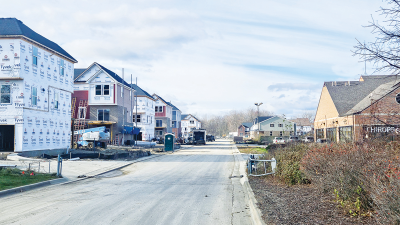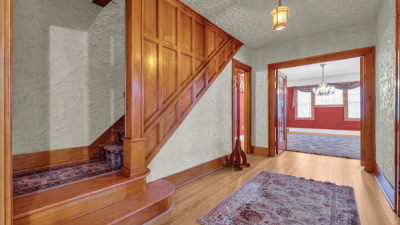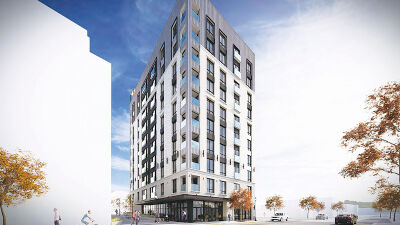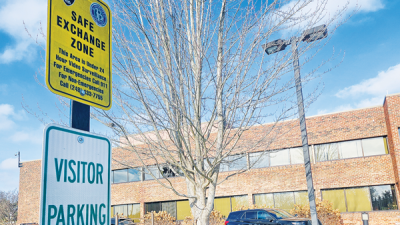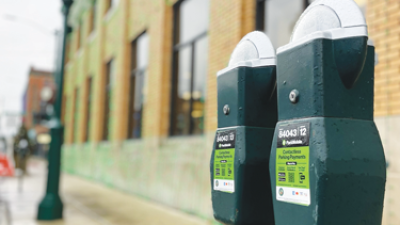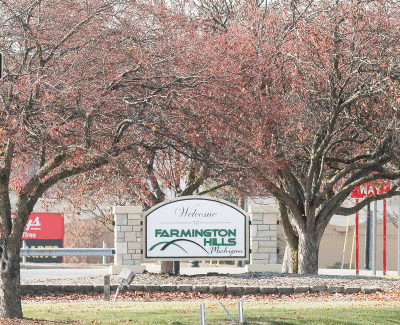
The city of Farmington Hills has begun the process of formulating ideas for a new master plan. Various areas of the city could have changes coming, including Grand River Avenue.
Photo by Patricia O’Blenes
FARMINGTON HILLS — Farmington Hills is in the midst of one of the most important processes that communities engage in, and it has the potential to result in some big changes.
The city has begun the process of considering what its next master plan should include.
Although state law requires that a master plan be updated every five years, that doesn’t mean a whole new plan is developed every time the update is required.
“There’s the option for the community to either do a whole new plan or to revisit an existing plan — either refresh or accept as is,” said Charmaine Kettler-Schmult, who is the director of planning and community development for the city of Farmington Hills.
A master plan is a document that helps guide communities with respect to decisions such as land use, development and preservation.
It helps provide a vision for what communities hope to look like in the years ahead.
Kettler-Schmult expects the next master plan to be the most comprehensive one Farmington Hills has had in place since 2009.
“For an entirely new document, (to) start from scratch, the last time we did that was in 2009, and there were revisits, periodically, after that time,” she said.
Kettler-Schmult said a master plan is the “Planning Commission’s document.”
“City Council is included in development and gets a say in how it gets put together, but that is a Planning Commission document,” she said. “Even though we’re not required to have City Council approve the master plan, per state law, we are electing to do that through this process. So City Council will be approving the document when it is in its final format, in addition to the Planning Commission. So both will be approving that final document.”
Farmington Hills City Manager Gary Mekjian described a master plan as a “visioning effort.”
“What do folks in Farmington Hills want the city to look like, say, in 20 years? When you do kind of a heavy update, you’re really thinking about the next generation or generations. … What’s it (going to) look like? What the use is going to be, how tall are the buildings? Where are you going to have different types of facilities? It’s really the underpinning of what the future vision of the city is,” Mekjian said.
Farmington Hills Mayor Vicki Barnett said that she has been involved with the Farmington Hills City Council since 1995.
“This is the first time that I remember us taking this kind of deliberate look at the types of developments we’re looking for,” she said. “It’s no longer attractive to have seas or oceans of parking lot before you get into a building. That street view is becoming more and more important, and we want it to be visually beautiful, as well as enticing to people who (want to) shop.”
Mekjian discussed what some of the differences may be between the current master plan and an updated one.
“I think you’ll see specific areas in the city of Farmington Hills that our Planning Commission and City Council have focused on as perhaps districts of interest,” he said. “Those districts could involve a variety of different types of zoning aspects that perhaps push things up closer to roads, allow taller buildings, perhaps increase density — maybe different aspects of more opportunities for mixed use.”
A trend that has developed since the onset of the pandemic could potentially affect the future look of some areas of the city.
“If everybody’s working from home — or three days a week they’re supposed to be in the office and the other two they work remotely — how does that affect office space? Now all of a sudden, if a 30-year office space isn’t needed, what are the developers thinking about what they’re gonna do with that space? Perhaps put some tools in place so that encourages that conversation,” Mekjian said. “Try to be creative from that perspective.”
Some of the areas that could potentially be focus areas of a new master plan include the 12 Mile Road corridor from Farmington to Haggerty roads; Orchard Lake Road, at both 13 Mile Road and at 14 Mile Road; and the Grand River corridor from Eight Mile Road “east into downtown Farmington,” Mekjian said.
Mekjian discussed the importance of Farmington Hills embarking on a new master plan.
“If we don’t have our zoning master plan updated to try to project what current or future planning trends are, then we will have a city that was pretty much master-planned and zoned in the 1980s, and that’s not really what’s going on now,” he said. “The generation of folks that lived here in the ’70s and ’80s wanted what you have here, which is (a) low-rise, pretty much, suburban feel. There’s not a lot (of) areas where you have a really thriving central business district or even a downtown area. … We consider our sister city, Farmington, as our downtown, but that doesn’t mean Farmington Hills can’t have business districts or commercial retail districts that are an attraction for folks, not just within Farmington Hills, but regionally, as well.”
Although a new master plan could lead to an increase in density, Mekjian said that doesn’t necessarily mean there would be an increase in traffic problems, due to the potential development of autonomous vehicles and ride-sharing services.
“The other thing, too, that’s also included with this, which we’ve been wanting to do for a long time, is a non-motorized master plan,” he said. “So while we have pretty good non-motorized connectivity throughout the city, as part of this effort, we’ll have a really nice master plan which we can build a strategic plan on — building on better non-motorized connectivity throughout the city.”
In order to implement the vision of a new master plan, Farmington Hills will likely need to create some new ordinances.
“Our ordinances, currently, are based upon previous master plans and our previous vision for the community,” Kettler-Schmult said. “It (doesn’t) always allow for what the commission and council may want to see in the future. For instance, electronic chargers. There’s not much in our code right now, as to direction on where they can be placed, how they can be located and … uses in our community.”
The creation of new ordinances could also allow for drive-thru lanes for business locations, including retail stores.
“Drive-thrus are not permitted in a lot of business locations within Farmington Hills,” Kettler-Schmult said. “It may be that our Planning Commission, City Council and the greater community want to be able to expand that and have it as an allowed use. … The master plan is where it all starts. That vision for the future starts us (on) the road of changing ordinances, perhaps changing zoning, (and) getting those permitted uses allowed in more areas than they currently are.”
Mekjian’s aspiration for a new master plan is to “create some very cool areas in town where our residents can gather throughout the year.”
“So that’s a big part of it, try to stay a contemporary, attractive city where people want to come, you got a high standard of living, really good quality of life, and safe, clean and open for everybody to enjoy,” he said. “That’s really the goal here.”
Residents also have an opportunity to provide input as to what they would like to see included in a new master plan.
To do so, visit fhgov.com and look for a survey on the homepage of the website.
“We’re looking for everybody to make their voice heard,” Kettler-Schmult said.
Aside from what they want to see preserved or expanded, there is also another way residents can provide input.
“If there’s a certain corner of the community that they think really needs a close look … I encourage everybody to get on that survey,” Kettler-Schmult said.
Both Mekjian and Kettler-Schmult anticipate that a new master plan will be ready next summer.
 Publication select ▼
Publication select ▼



